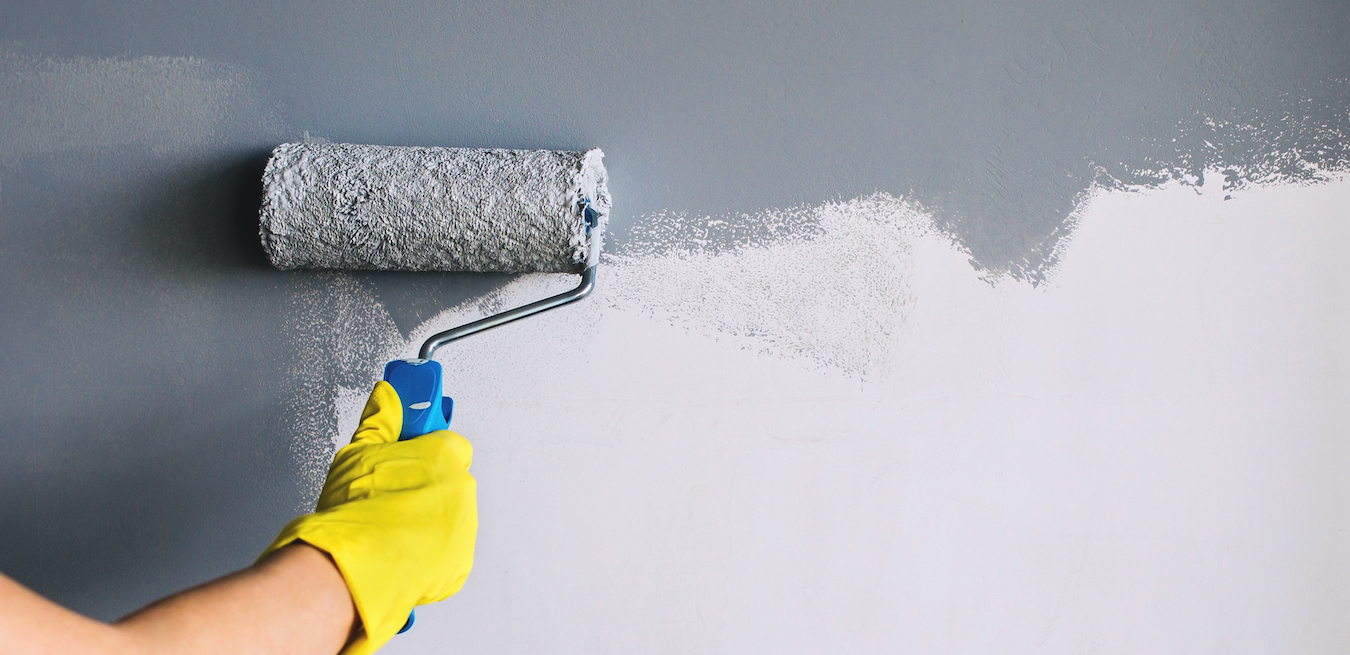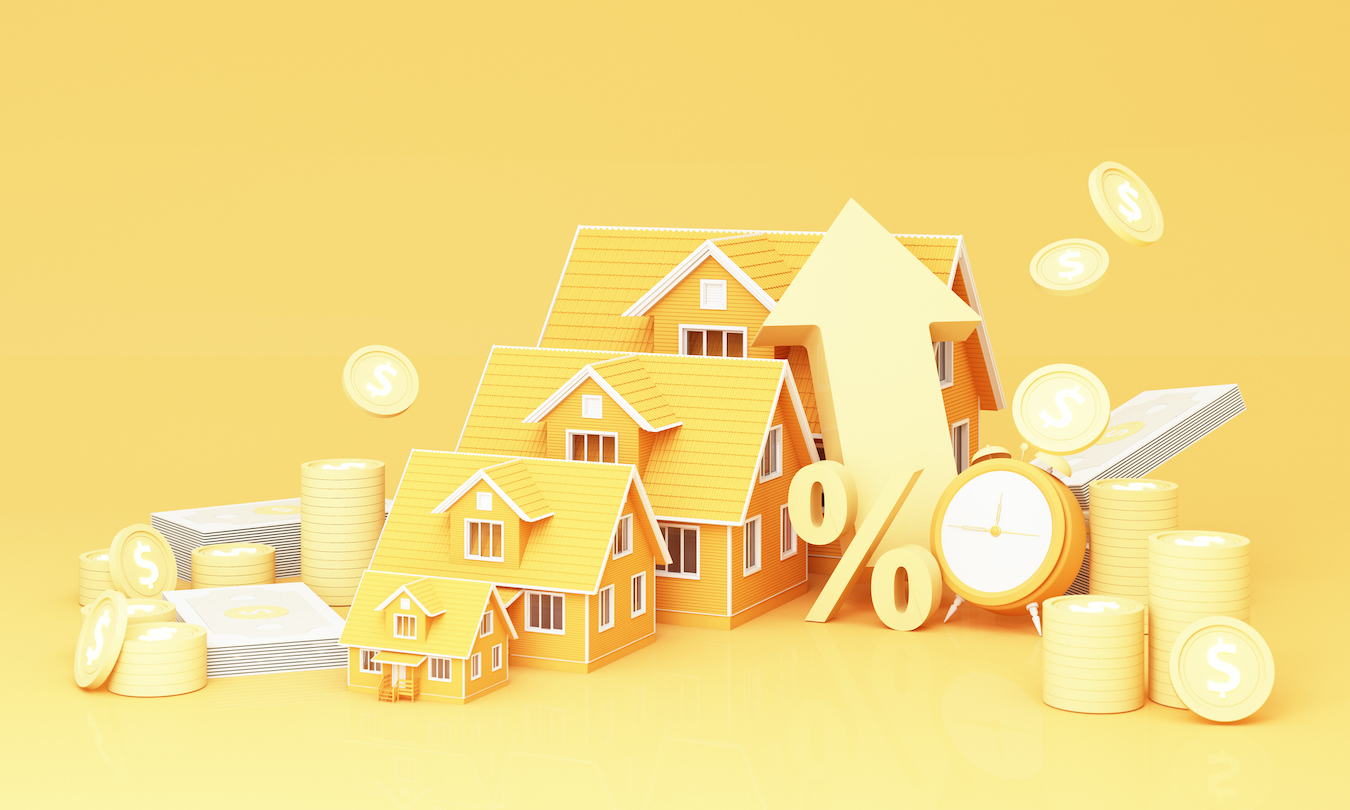6 Inexpensive & Easy Home Improvements to Increase Value

If you’re considering selling your home, you will want to get the highest sale price you can. Home improvements and renovations are an excellent way to make your home more appealing and more valuable to buyers, allowing you to ask for a higher price.
While the idea of making home improvements might sound daunting, these changes don’t have to be big, expensive, time-consuming projects. Even small, more affordable changes can pay off with a significant boost to your home’s value.
Ready to Renovate Your Home?
After having lived in your home for a few years, it starts to show wear and tear despite your best efforts at maintenance and care. If you are looking to put your house on the market, there are a few DIY tips that can help increase its value.
Before you start making a list of projects that you want to do, it’s important to plan out the whole process carefully. You will need to choose projects that are not only practical, but that will give you a good return on your investment. Additionally, considering the preferences of potential buyers when selecting which improvements to undertake can significantly enhance the appeal and value of your property. You will also need to consider your budget, your timeline, and just which improvements you’re comfortable handling entirely on your own.
Step 1: Determine Your Goals for Adding Home Value
The types of improvements and renovations that you will want to add to your list will depend on your personal goals. Focus on your timeline for selling your house to decide which projects are right for you.
For example, if you plan to sell your house within the coming year, then you will want to choose projects and improvements that can be completed quickly. Projects like landscaping improvements, painting, new doors and windows, and closet renovations can quickly improve your house, so you could potentially list it in just a few months.
In fact, according to a study, buyers will pay 7% more for a house that has great curb appeal when compared to a house with an exterior that has been neglected. That means that if your home is worth the average U.S. home value of $360,000, investing in curb appeal could boost your home’s resale value by as much as $25,000.
If you plan to stay in your house for another five or 10 years, the list of potential projects expands. Larger renovations, like an entire kitchen or bathroom renovation, become more practical, especially when you’ll get to enjoy the improvements yourself for years.
Step 2: Create a Budget
Before you start planning each project, it’s helpful to determine your overall budget and which projects will fit into that budget. Consider how much you are comfortable spending on the total of your home improvements, as well as how you will finance the work. Next, choose projects that fall within that budget, but be sure to set some money aside for those unexpected expenses that always occur when you’re in the middle of a project.
As you develop a list of improvements that you would like to make, start to estimate the cost of completing each project. According to NerdWallet, home renovation costs can range greatly. An average mid-range kitchen renovation in 2025 is $27,492 while a major upscale kitchen renovation can cost more than $150,000. A midrange bathroom renovation is about $25,000 while a high-end one is over $75,000.
But there’s a lot you can do for much less. You can spiff up a bedroom with new paint, furniture, and closet organization for $1,500 to $5,500, and make a living room much more livable with fresh flooring, lighting, etc., for $5,000 to $10,000.
If the work that you will be performing requires a professional, call multiple contractors for quotes and compare them to get a sense of what you will spend. If a project requires only your time and materials, you can price those materials out at your local hardware store to get a sense of the total cost.
Step 3: Select Your Project
Once you know your budget and your timeline, you can start to select your project or projects. If you’re planning on making multiple improvements, prioritize the projects that are most important to you and start with them. You may find that a project costs more or less than what you estimated.
With that top-priority project completed, you’ll have a better idea of how much money is left in your budget, and you can keep working your way down the list of other projects.
Step 4: Make a Plan
Making home improvements takes time and financial investment, but remember that homeownership offers many advantages when compared to renting. When you own your home, you can build up equity or might even use your home as an investment by renting it out. Improving your home’s value can help you to get the most out of the investment that you’ve made in the property, and can position you to be able to afford a nicer new home.
As you determine the home improvements you want to make, it’s time to plan out how you will accomplish each project. Will you need to hire a contractor? If so, be sure to check references and have a discussion with the contractor about their schedule, availability, and ability to stay within your budget.
>> Related Read: The Best Home Improvements to Increase Value (Highest ROI)
Depending on the project, you may need to clean out an area of your home. Think about how the work will fit into your own family schedule as you schedule the project. Home renovations often take longer than expected, so if you’re working with a deadline of listing your home for sale, schedule the project’s start so you have extra time to complete it, just in case.
Remember: There are plenty of smaller, more affordable projects that you can do mostly or entirely yourself.
6 Home Improvements to Increase Value Without Breaking the Bank (or Your Back, if You DIY)
1. Pretty Up Your Landscaping
Enhancing your home’s curb appeal through landscaping not only adds to the exterior aesthetic value of your home but also makes a positive first impression on buyers. As you plan out landscaping projects, focusing on green, eco-friendly changes can not only enhance your home but can prioritize the environment, too. Your green landscaping may also appeal to eco-conscious buyers.
To start, focus on your lawn’s health. Set up a regular mowing schedule to keep your lawn looking its best, and consider using a manual push mower so you’re not consuming gasoline. Seed any thin or bare spots on your lawn.
You can plant shrubs and trees to enhance the look of your home and to support local wildlife. Consider buying flowering plants that support bees and hummingbirds, or choose trees that will grow to serve as homes for birds and squirrels.
When it comes to watering your lawn or plants, set up a rainwater harvesting system to capture and store rainwater. Then, you can use the water for all sorts of purposes, including maintaining your landscaping.
2. Add a Fresh Coat of Paint
A fresh coat of paint goes a long way in improving your home’s exterior aesthetic value, which can lead to higher selling prices. The transformative effect of fresh paint on both the interior and exterior of a home cannot be overstated, as it not only enhances curb appeal but also signifies a well-maintained property to potential buyers.
Touch Up or Re-Do Your Exterior Paint
Sand off peeling paint and touch up your home’s exterior, or even repaint the entire exterior. This enhancement will leave your home looking fresh and well cared for.
Add Stone Veneer to the Front of Your House
The Journal of Light Construction reports that adding a stone veneer to the front of your house will cost an average of $11,000 but add more than $17,000 in value to your home at resale. That’s an investment that can pay off with a higher value and may even help to catch buyers’ eyes and bring buyers into your home.
Get a Door of Steel
Investing in a well-maintained and attractive front door, such as a low-maintenance steel door, can significantly enhance your home’s curb appeal and make a great first impression. This upgrade not only makes your home more energy efficient but can also pay off when you sell the home.
Replace Your Garage Door
A new garage door not only makes your home look well-maintained, but it can also result in nearly a 200% return on investment when you sell your home. The Journal of Light Construction estimates the cost at around $4,500 but the return value at over $8,750.
Update Your Mailbox and House Numbers
Even your mailbox and house numbers make an impression on buyers. If they’re old, worn, or outdated, replace them with new ones for an easy and inexpensive fix.
3. Create an Illusion of Space
You can make your home appear to be larger (and more valuable) by strategically placing your furniture. Choose furniture that’s appropriately sized for your rooms, and try to avoid big, dark-colored pieces that can overwhelm a space. Try to avoid placing furniture in the middle of rooms, and instead position it along walls to maximize walking space.
Incorporating an open layout design that connects the kitchen, dining room, and family room can significantly enhance the desirability of your home for potential buyers, creating a spacious and interconnected living area.
Natural light also plays a key role in making homes feel more spacious. Replace dark, heavy window treatments with light-colored materials that let plenty of sunlight through. You might consider just using valances to make your windows and your rooms feel larger. Even a thorough window washing can make a noticeable difference!
4. Install Smart Home Energy-Saving Fixtures
Consider replacing your lighting fixtures with smart home updates or energy-saving fixtures, as well as updating and modernizing your light fixtures to enhance the overall look and feel of your home. These modern fixtures can instantly update a space, adding appeal, brightness, and functionality, and they add an aesthetically pleasing touch.
Energy-efficient fixtures also add value in terms of the energy that they can save you, keeping your utility bills lower. You’ll have the satisfaction of knowing that you’re supporting the environment, and these fixtures may appeal to any eco-conscious buyers who view your home. For a wide selection of modern light fixtures and DIY installation classes, consider visiting your local home improvement store.
Upgrade to Energy-Efficient Appliances
Your home renovation can be as simple or as complex as you desire. You can add in energy-efficient lighting and fixtures fairly easily. Other, more involved projects could include a smart garage door, a smart security system, smart water heaters, and more.
It’s important to perform some due diligence before you make these purchases to ensure that you’re getting an ideal return on investment on these enhancements. If you’re planning to live in your house for at least a few years, look for information on just how much money each device could save you to determine if you’ll be there long enough for the devices to start to pay for themselves.
Switch to Energy-Efficient Windows
Installing energy-efficient windows can provide valuable savings on your heating and cooling costs. About 30% of heating energy is lost through windows according to energy.gov, so simply improving your windows could pay off in energy savings.
Replacing old windows can also improve your home’s appearance. With age, old windows can become dingy and unsightly. New windows will let maximum light through and instantly improve your home’s appearance, both from inside and out.
5. Spruce Up Your Bathroom with Sleek Fixtures
Simple upgrades in your bathroom can go a long way. Investing in new, modern fixtures and a coat of paint can have your bathroom looking refreshed and welcoming.
When renovating a bathroom, focus on small changes that will have a big impact. Determine which elements will have the biggest impact on the room, which will help to ensure you get your money back by increasing your home’s value.
6. Modernize Your Kitchen Strategically
A kitchen full of modern appliances can be a key selling point that can increase your home’s value. But remodeling an entire kitchen is an expensive job.
Instead of going all-out, assess which upgrade options will give you real value. For example, installing new appliances can make for a highly appealing kitchen, and you don’t need to choose top-end appliances to make a big visual impact. The appeal of hardwood floors in homes is undeniable, offering options to reveal, restore, or replace them with luxury vinyl planks based on their current condition and buyer preferences, which can significantly enhance the kitchen’s overall look and feel.
But there are other ways you can save. You can refurbish cabinets with paint and new handles instead of replacing them, and simply painting your walls, ceiling, and trim will create a refreshed, modern look.
What Home Improvement Projects Decrease Value?
Some home improvement projects don’t result in a significant increase in your resale value, or they aren’t desirable to a broad buyer market. If buyers don’t value those improvements, then you could lose money and time making enhancements that don’t give you any real return.
The following home improvement projects might seem appealing, but chances are they won’t pay off in the increased value you’re seeking.
Avoid the Swimming Pool
An in-ground swimming pool is an appealing luxury, but the cost of installing such a pool is so high that it’s difficult to make that money back. Installing a pool can cost tens of thousands of dollars, but it would only add 5% to 8% to your home’s value. Keep in mind that some buyers don’t want a pool, too, so its presence might actually be a detraction from your home.
Skip the Luxury Upgrades
Big, luxury upgrades like dual ovens or an HVAC system might seem appealing, but they can make your home more difficult to sell. These luxury upgrades are expensive to buy and install, and they may not deliver the return on investment you want. Luxury upgrades can make homes more expensive to maintain, and they might not appeal to a buyer’s personal taste or needs.
The upgrades may also make your home one of the most expensive in the neighborhood, which can make it difficult to sell. A real estate agent may have a hard time finding applicable comps, so it may be more difficult to accurately value your home when the others nearby aren’t close to its value.
Pass on the Garage Conversion
Converting your garage into a man cave, den, gym, or living space might sound like a fantastic idea to you, but what will the buyers think? Garages are highly valued spaces, and most buyers will use a garage to protect and store their vehicles. Converting that space for another purpose means that a buyer will actually have to do more work to transform the space back into an area that they can use. A conversion might not increase your home’s value at all, and it could even detract from it.
As you explore these potential home improvements, always keep thinking about your goal. When you choose the right projects, you can boost your home’s value and even make it easier to sell your home, since it will appeal to more buyers.
Ready to Buy or Refinance?
Buying a home is one of the most important decisions you will make. The team at Guidance Residential is here for you, from the first step of pre-qualification or pre-approval, on through to finding the right real estate professional for you and your family — or refinancing a home you already own. We invite you to explore the home buying process with Guidance Residential today. You can also instantly calculate an estimate specific to your personal situation with our finance calculators online.
Guidance Residential remains the #1 U.S. Islamic home financing provider, with more than 40,000 families assisted over more than 20 years. Learn more about our co-ownership model of Islamic home financing, and get started on your home finance journey today.
Your Guidance Residential Account Executive is here to help with any questions. Looking to refinance or purchase? Have a friend or family member who is looking for a home? Call 1.866.Guidance, or start an application today.
Originally published January 2013, updated March 2025.



